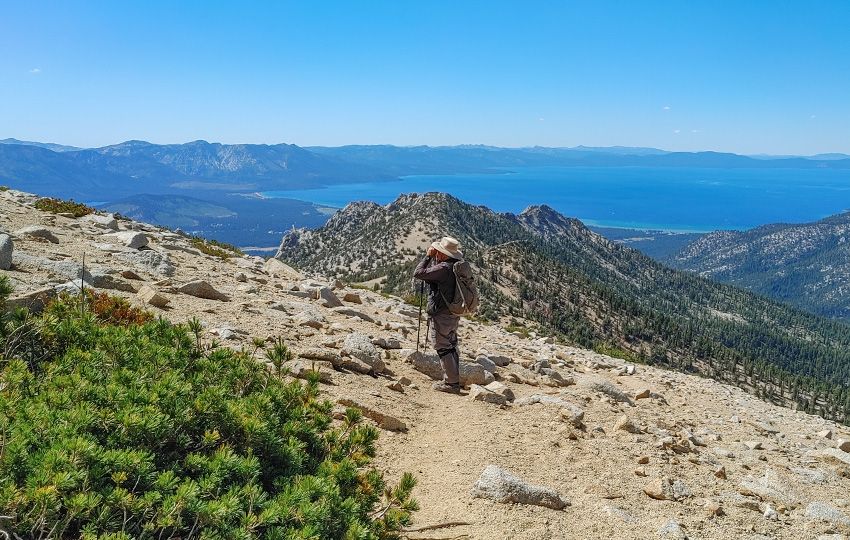Report on Wildlife Conservation and Alignment with Sustainable Development Goals
Introduction: Assessing Conservation Efforts through Key Wildlife Sightings
This report analyzes recent documented sightings of rare and endangered species, highlighting the critical role of conservation technologies and strategies. These efforts are evaluated in the context of the United Nations Sustainable Development Goals (SDGs), particularly SDG 15 (Life on Land), demonstrating the intrinsic link between biodiversity protection and global sustainability targets.
Case Study: Snow Leopard Sighting and Progress Toward SDG 15
Recent footage from the Gahai-Zecha National Nature Reserve in China confirmed the presence of a rare snow leopard mother and her cub. This marks the first sighting of the endangered species in the reserve since monitoring began in 2018. This development underscores the positive impact of targeted conservation initiatives, which directly contribute to achieving SDG 15.
Conservation Initiatives in the Gahai-Zecha Reserve
- Optimization of monitoring systems to track wildlife without human disturbance.
- Increased public awareness campaigns to foster community support for conservation.
- Habitat and ecosystem improvement projects to strengthen the species’ chance of survival.
These actions align with SDG Target 15.5, which calls for urgent and significant action to reduce the degradation of natural habitats, halt the loss of biodiversity, and protect and prevent the extinction of threatened species.
The Role of Technology in Monitoring and Protection
Trail cameras have proven to be an indispensable, non-invasive tool for wildlife conservation, providing essential data that supports the objectives of SDG 15. The benefits of this technology include:
- Enabling experts to monitor endangered species and assess population health without direct human intervention.
- Documenting evidence of poaching threats, allowing for timely intervention.
- Confirming the successful rehabilitation and return of animals to their natural habitats.
Global Efforts in Protecting Life on Land (SDG 15)
Similar conservation successes have been reported globally, reinforcing the importance of international commitment to SDG 15.
- India: Trail cameras were instrumental in protecting two tiger cubs from poachers by monitoring their location until their mother returned. This directly supports SDG Target 15.7, which aims to end poaching and trafficking of protected flora and fauna.
- Bangladesh: Researchers utilized camera traps to spot a leopard, a critically endangered species in the region, providing vital data for conservation strategies aimed at mitigating habitat loss and poaching.
- Saudi Arabia: A rare Egyptian vulture, with an estimated national population of only 50 breeding pairs, was documented in a national park, highlighting the importance of protected areas for species survival as outlined in SDG 15.
Challenges and the Imperative for SDG 17 (Partnerships for the Goals)
Despite these successes, a significant challenge remains: the chronic underfunding of conservation organizations. From local non-profits to national park services, a lack of financial resources impedes the full implementation of necessary conservation work. This systemic issue directly threatens the achievement of SDG 15. Addressing this gap requires robust implementation of SDG 17 (Partnerships for the Goals), which encourages and promotes effective public, public-private, and civil society partnerships to mobilize financial resources and expertise for sustainable development.
Conclusion: The Interconnectedness of Biodiversity and Sustainable Development
The protection of wildlife and the responsible management of ecosystems are fundamental to achieving the 2030 Agenda for Sustainable Development. The health of our planet’s biodiversity has a direct impact on human well-being, including food security (SDG 2: Zero Hunger) and public health (SDG 3: Good Health and Well-being). Therefore, investing in the protection of life on land (SDG 15) is not an isolated goal but a critical component for building a sustainable and resilient future for all.
1. Which SDGs are addressed or connected to the issues highlighted in the article?
-
SDG 15: Life on Land
This is the primary SDG addressed. The article’s central theme is the conservation of terrestrial ecosystems and the protection of endangered species. It discusses efforts to monitor and protect rare animals like snow leopards, tigers, leopards, and Egyptian vultures, all of which are crucial components of life on land. The text explicitly mentions threats such as habitat loss, poaching, and the need for biodiversity conservation, which are core concerns of SDG 15.
-
SDG 17: Partnerships for the Goals
This goal is relevant due to the article’s mention of financial constraints in conservation. The statement that “the people and organizations that can best help wildlife conservation with these tools are typically underfunded” highlights a critical gap in the resources needed to achieve conservation goals. SDG 17, particularly its targets on finance, emphasizes the need for mobilizing financial resources to support sustainable development objectives, including biodiversity conservation.
2. What specific targets under those SDGs can be identified based on the article’s content?
SDG 15: Life on Land
-
Target 15.5: Take urgent and significant action to reduce the degradation of natural habitats, halt the loss of biodiversity and, by 2020, protect and prevent the extinction of threatened species.
The article directly relates to this target by focusing on “endangered,” “critically endangered,” and “rare” species. The conservation efforts described, such as improving the snow leopard’s habitat and ecosystem, using trail cameras to monitor populations, and protecting them from threats, are all actions aimed at preventing the extinction of threatened species and halting biodiversity loss.
-
Target 15.7: Take urgent action to end poaching and trafficking of protected species of flora and fauna and address both demand and supply of illegal wildlife products.
This target is identified through specific examples in the article. It mentions that conservationists used trail cameras to “monitor and protect two tiger cubs in the wild from poachers” and that leopards in Bangladesh are critically endangered due in part to “poaching.” These statements show a clear focus on combating the illegal hunting of protected animals.
-
Target 15.9: By 2020, integrate ecosystem and biodiversity values into national and local planning, development processes, poverty reduction strategies and accounts.
The article implies this target through the description of actions at the Gahai-Zecha National Nature Reserve. The “stronger push in recent years for more biodiversity conservation efforts at the nature reserve, like optimizing monitoring systems and increasing public awareness” demonstrates the integration of biodiversity values into local conservation planning and management.
SDG 17: Partnerships for the Goals
-
Target 17.2: Developed countries to implement fully their official development assistance commitments, including the commitment by many developed countries to achieve the target of 0.7 per cent of ODA/GNI to developing countries and 0.15 to 0.20 per cent of ODA/GNI to least developed countries; ODA providers are encouraged to consider setting a target to provide at least 0.20 per cent of ODA/GNI to least developed countries.
While not mentioning specific countries or ODA, the principle of this target is relevant. The article’s statement that conservation organizations from “small nonprofit rescue centers all the way up to the U.S. National Park Service” are “underfunded” points to a systemic lack of financial resources for achieving sustainable development. This highlights the need for increased financial support, which is the essence of this target.
3. Are there any indicators mentioned or implied in the article that can be used to measure progress towards the identified targets?
SDG 15: Life on Land
-
For Target 15.5 (Protect threatened species):
- Population estimates of endangered species: The article provides specific numbers that serve as a baseline for measuring population health, such as “An estimated 1,200 snow leopards live in China” and “Only 50 breeding pairs of the [Egyptian] bird are estimated to live in the country.” Tracking these numbers over time would indicate progress.
- Species presence in monitored areas: The sighting of a snow leopard mother and cub in a reserve where they “had previously not been seen at the site since monitoring began in 2018” is a qualitative indicator of potential population recovery or range expansion.
-
For Target 15.7 (End poaching):
- Incidents of poaching activity: The article mentions the use of cameras to protect tiger cubs “from poachers.” A reduction in such documented threats or attempts would be a direct indicator of progress towards this target.
SDG 17: Partnerships for the Goals
-
For Target 17.2 (Financial resources):
- Funding levels for conservation organizations: The article explicitly states that conservation groups are “typically underfunded.” Therefore, an implied indicator would be the measurement of financial flows to these organizations. An increase in funding would signify progress toward providing the necessary resources for conservation work.
4. Create a table with three columns titled ‘SDGs, Targets and Indicators” to present the findings from analyzing the article.
| SDGs | Targets | Indicators |
|---|---|---|
| SDG 15: Life on Land | 15.5: Protect and prevent the extinction of threatened species. | Population counts of endangered species (e.g., “estimated 1,200 snow leopards”); Sighting of species in previously unoccupied monitored areas. |
| SDG 15: Life on Land | 15.7: Take urgent action to end poaching and trafficking of protected species. | Incidents of poaching (e.g., using cameras to “protect two tiger cubs in the wild from poachers”). |
| SDG 15: Life on Land | 15.9: Integrate ecosystem and biodiversity values into national and local planning. | Implementation of local conservation plans (e.g., “optimizing monitoring systems and increasing public awareness” at the nature reserve). |
| SDG 17: Partnerships for the Goals | 17.2: Mobilize financial resources for developing countries for sustainable development. | Funding levels for conservation organizations (e.g., the article states they are “typically underfunded”). |
Source: yahoo.com







